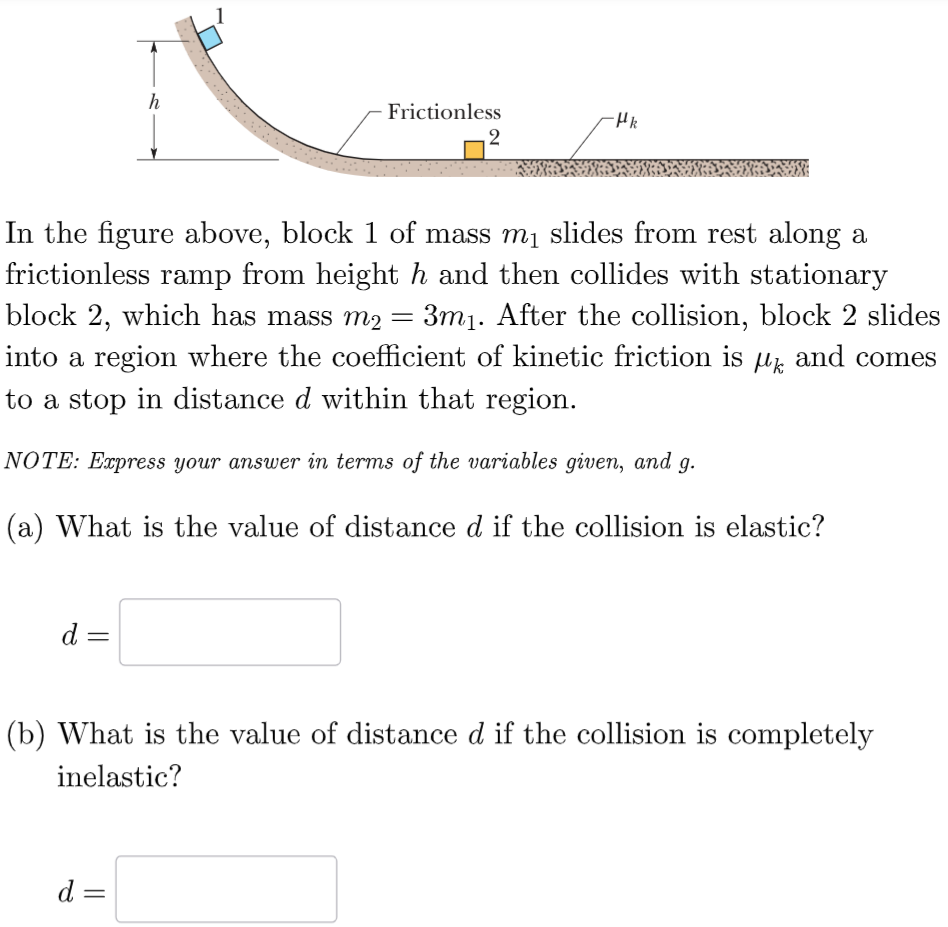In the figure above, block 1 of mass m1 slides from rest along a frictionless ramp from height h and then collides with stationary block 2, which has mass m2 = 3m1. After the collision, block 2 slides into a region where the coefficient of kinetic friction is μk and comes to a stop in distance d within that region. NOTE: Express your answer in terms of the variables given, and g. (a) What is the value of distance d if the collision is elastic? d = (b) What is the value of distance d if the collision is completely inelastic? d =
